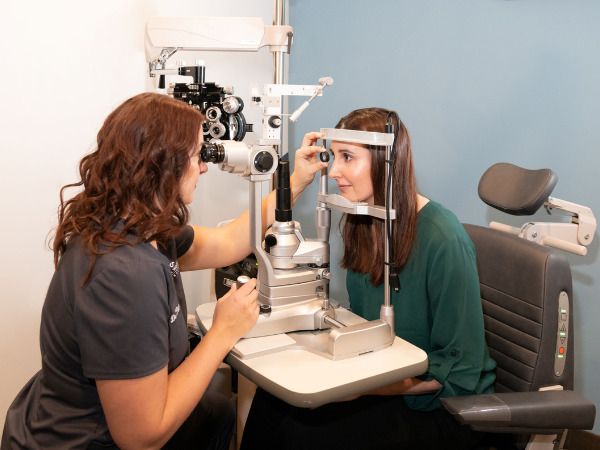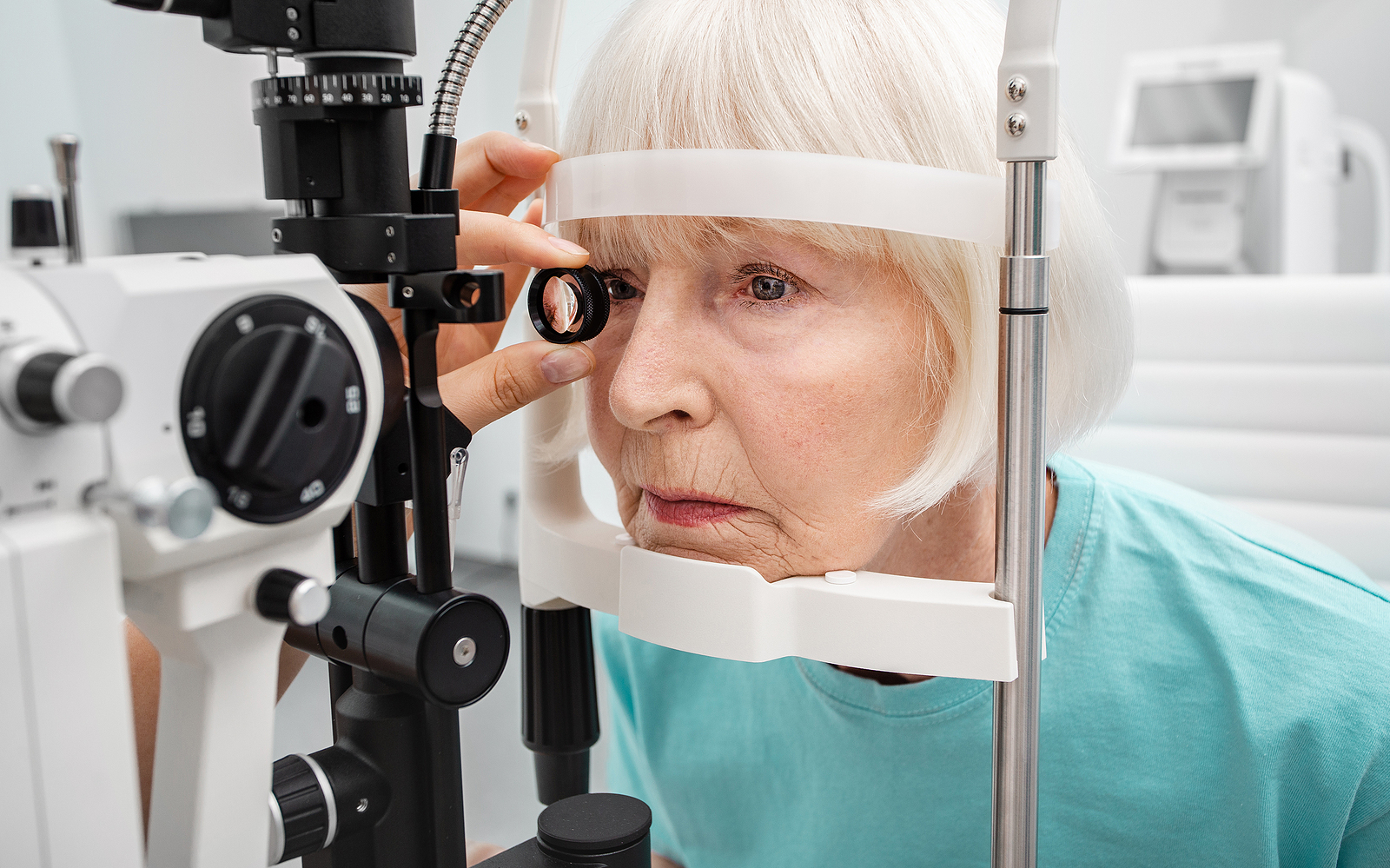National Glaucoma Awareness Month: Get the Facts and Protect Your Vision

Glaucoma is one of the leading causes of blindness, affecting approximately 3 million Americans, per the Glaucoma Research Foundation In Arizona alone, almost 51,000 residents have glaucoma. These high numbers may be startling, but they do not have to be devastating. We at Swagel Wootton Eye Institute believe that education is one of the strongest keys to prevention, early detection, and treatment.
January is National Glaucoma Awareness Month, helping people better understand this eye disease. We support this initiative by providing the facts you need to stop glaucoma from progressing. Our qualified team provides the comprehensive eye exams, eye care, and treatments necessary for these goals. The National Eye Institute recommends a dilation test as part of your regular exam to help detect glaucoma.
National Glaucoma Awareness Month
National Glaucoma Awareness Month 2023 is an important time. It shows us the value of receiving excellent eye care. Early-stage glaucoma rarely shows symptoms, which is why it is particularly dangerous. As the disease progresses, the damage results in vision loss and blindness. However, professional eye doctors can and do catch primary and secondary glaucoma during special tests. In this way, they can evaluate and treat the problem before severe damage occurs.
National Glaucoma Awareness Month also reminds us of the power of talking to family members about glaucoma. Many people have increased risk factors, including people of African, Asian, or Latino populations over 40, those with a family history of glaucoma, and anyone over 60. We should all share our knowledge of glaucoma and encourage friends and family to receive eye tests. Our support is critical in the fight against this progressive eye disease.
What Is Glaucoma?

Glaucoma is an eye condition, or more specifically a series of diseases, damaging the optic nerve. In most cases, high fluid and eye pressure levels in the eye lead to the damage. The optic nerve, filled with over a million nerve fibers, delivers images from the retina to the brain. Unfortunately, when damage occurs, this crucial nerve pathway eventually stops sending accurate visual messages. As a result, the affected eye or both eyes can suffer irreversible vision loss.
Types of Glaucoma
Glaucoma can present in two ways: primary open-angle and acute angle-closure glaucoma. Primary open-angle glaucoma is the most common development, but patients should still be aware of both possibilities.
Primary Open-Angle Glaucoma
When patients present with glaucoma, it is typically primary open-angle glaucoma. In a healthy eye, fluid flows freely throughout the eye and out through an intricate network and drainage canal. However, in primary open-angle glaucoma, the fluid cannot move through the network and filter out. It causes a buildup in intraocular pressure, damaging the optic nerve over time. This type of glaucoma occurs slowly, painlessly, and progressively. Since this is the case, people may not notice any vision changes at first, but a qualified eye doctor can identify it. National Glaucoma Awareness Month 2023 empowers patients to be proactive about eye health and book routine eye checkups.
Acute Angle-Closure Glaucoma
Acute angle-closure glaucoma is a less common type of glaucoma, and it is a serious eye emergency. In the eye, drainage canals are between the iris and the cornea. If the iris and cornea move closer together, effectively closing the angle, it can block these canals, and fluid cannot move out of the eye. Intraocular pressure builds up quickly and painfully. It can cause optic nerve damage fast, often first signaled by rainbow-colored rings and light halos. Professionals need to treat and stop damage progression immediately.
Symptoms of Glaucoma
At Swagel Wootton Eye Institute, we encourage you to receive routine eye exams and schedule evaluations for any eye or vision changes. Since many cases of glaucoma progress slowly, it can be impossible for the affected person to notice early on. However, our educated and experienced eye doctors can run specialized tests to identify its presence.
Primary open-angle glaucoma rarely presents symptoms in its initial stages, but the optic nerve does sustain damage. After a certain amount of optic nerve damage, blind spots begin to develop, typically in side vision. Often, this is a significant warning sign of a vision problem. Other advanced symptoms include peripheral vision loss, central vision loss, and blindness. 120,000 in the United States suffer blindness as a result of glaucoma as do 8.4 million worldwide.
On the other hand, acute angle-closure glaucoma presents sudden, concerning signs. Rainbow rings, light halos, blurred vision, headaches, mild or severe headaches, nausea, vomiting, and eye redness are common. These symptoms indicate an emergency, and patients should quickly contact their eye doctor or eye care clinic.
The Importance of Regular Eye Exams

National Glaucoma Awareness Month 2023 is an excellent time to book your eye exam. Since glaucoma can do damage without people even realizing it, exams are the best defense against the disease. In fact, of the 3 million Americans who have glaucoma, half of them may not know they have it. Professionals can find and treat glaucoma before it creates significant vision loss, and even stop further damage if it has already impaired vision to a degree.
Our Swagel Wootton Eye Institute team would also like to remind you eye exams are great opportunities. You can express concerns, ask questions, or request information about glaucoma. Our knowledgeable staff would be happy to have thorough discussions about glaucoma and your particular case. In this way, you can leave your appointments confident about your eye care, health, and eyesight.
Glaucoma Risk Factors
Are you in a high-risk group? It is important to know that anyone can get glaucoma, but certain people are at higher risk especially the following:
- Over the age of 60
- African, Asian, or Hispanic heritage and over the age of 40
- Family history of glaucoma
- Family history of diabetes
- Steroid medication use
- Medical conditions such as obesity, diabetes, hypertension, migraines and circulatory issues
- Hyperopia or myopia
- Thin cornea or thinning optic nerve
- High intraocular pressure
- History of eye injury/ injuries
- Narrow or small drainage angles in the eye
In rare cases, babies can inherit congenital glaucoma that requires lifelong monitoring.
You should discuss your risks for glaucoma and schedule regular screenings with your eye doctor. It is especially important if you identify with any of these factors.
Protecting Your Vision
In honor of National Glaucoma Awareness Month, the Swagel Wootton team compiled a list of the top ways to protect your vision:
- Receive Eye Exams on Schedule: Over the age of 40, your risk for eye and eyesight changes increases significantly. Professionals recommend seeing an eye doctor every one to two years. Your doctor may recommend more frequent exams if you are at a higher risk for glaucoma or other eye diseases.
- Know the Risks: Discuss potential risk factors with your eye care professional. If you do not know about certain factors, such as your family health history, ask questions and stay informed.
- Protect Your Eyes: Eye injuries can increase your chances of eye conditions, including glaucoma. When you play sports, work in hazardous conditions, or use dangerous chemicals, wear adequate eye protection.
- Manage Health Conditions: Managing any health or medical conditions is vital for overall well-being. It is also critical for your eye health. Maintaining a healthy weight, staying active and eating well, managing diabetes, and controlling blood pressure can help lower risks of developing glaucoma.
- Follow Treatment Plans: If you have glaucoma, it is critical to follow the prescribed treatment plan to prevent further damage and vision loss.
Diagnosis and Treatment
If you receive regular eye exams or screenings, eye doctors can catch glaucoma before it impairs vision seriously. Depending on your risk factors, they can perform a series of tests every year or every few years. They find and confirm diagnosis by:
- Measuring intraocular pressure
- Analyzing the drainage canal angle
- Examining the optic nerve
- Testing visual field and visual acuity
- Calculating the thickness of the cornea
At the moment, this sight-stealing disease does not have a cure, nor is optic nerve damage reversible. Still, ophthalmologists can treat advancement of the disease. They can prevent further damage to your optic nerve and eye. If managed appropriately, it is possible to stop vision loss and blindness. There are three main methods of glaucoma treatment:
- Eye Drops: The most common treatment plan involves eye drops to bring down intraocular pressure. They may reduce the amount of fluid production in the eye or facilitate fluid movement and drainage. Patients need to use the medicated drops 1 to 4 times daily.
- Laser Surgery: Laser surgery is an effective way to stop fluid buildup in the eye. Eye doctors use a precise laser tool to open up drainage passageways, create new drainage, or destroy some tissue that produces liquid.
- Surgery: If eye drops or laser treatment do not work, surgery may be an excellent option to promote better drainage. Doctors can create new drainage pathways, remove eye tissue, widen existing drainage tubes, or insert a small shunt.
Contact
Swagel Wootton Eye Institute takes the fight against glaucoma seriously, as many of our patients, friends, and loved ones suffer from this sneak thief of sight. Since January is National Glaucoma Awareness Month, we want to stress the importance of catching and preventing permanent damage as early as possible. Contact us today to schedule an eye exam and discuss your glaucoma concerns.
[DISPLAY_ULTIMATE_SOCIAL_ICONS]








